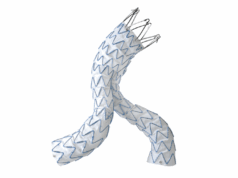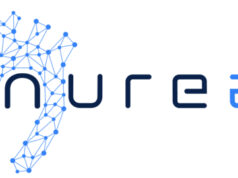
Evidence continues to accumulate of a link between endovascular aneurysm repair (EVAR) and cancer, with even small amounts of radiation potentially converting epithelial cells “to a precancerous or a cancerous state in smokers or ex-smokers,” according to world-renowned vascular disease researcher Janet Powell, MD.
The Imperial College London, England-based professor of vascular biology and medicine was speaking on the increasing concern that emerged about 12 years ago over CT surveillance of endografts and the associated radiation burden this might contribute to patients.
Back in 2011, explained Powell before an audience of 2021 VEITHsymposium (Nov. 16–20) attendees in Orlando, Florida, she and colleagues were preparing “the very long-term follow-up” of the EVAR1 trial, which included testing a hypothesis that late cancer deaths would be higher in the group of patients treated with EVAR vs. those who received open repair.
Over an eight-year period, the team found no difference in the rate of cancer deaths between the two groups. Beyond eight years, however, “the rate in the EVAR group escalated to 4.2 per 100 person years. This was almost twice as much as in the open repair group,” said Powell.
A year later, she continued, another group in London showed that radiation also causes DNA damage in the lymphocytes of EVAR operators.
Another couple of years on, Powell explained, and an English population-based cohort study demonstrated that after seven years, the hazard ratio of all cancers was 1.09 in patients treated with EVAR vs. those undergoing open repair—“a significant difference, with a particularly significant difference for abdominal cancers.”
A year after that, she said, a study that emerged out of South Korea looked at a population who had undergone aneurysm repair after an initial diagnosis of cancer and showed that the patients treated with EVAR had “a much higher proportional death rate from cancer than those treated with open repair.”
“So now that’s three separate studies: increasing risk of cancer after EVAR,” Powell told VEITH 2021 delegates.
She then turned to the specter of patients who continue to smoke and EVAR treatment. “What’s the etiology? Actually, what have we forgotten?” Powell asked. “What we have forgotten is that the cancer risk of smoking and radiation are multiplicative and not additive. And the evidence of this comes from a variety of studies.” At the cellular level, Powell added, the damage to DNA from smoking increases over time. “When radiation hits, the damage to non-smokers’ cells is limited,” Powell said. “But it escalates to those who are still smoking to produce cancerous cells.”












